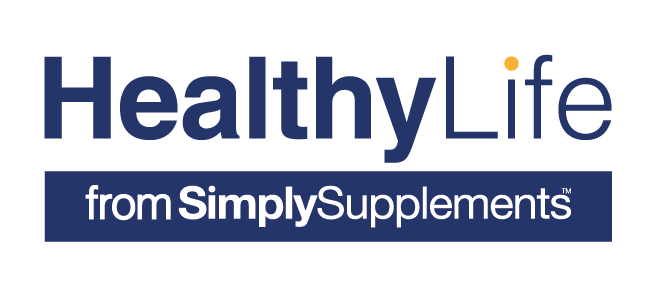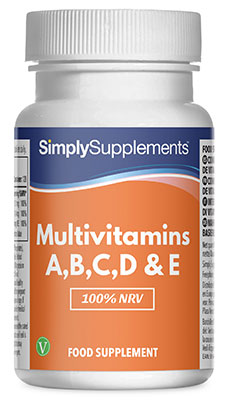NRV Meaning: What Does NRV Mean?

In the world of nutrition and dieting, there seems to be hundreds of different abbreviations, acronyms and complicated terms. It can be overwhelming when you’re trying to improve your own diet – let us take on some of the effort and act as your own nutritional dictionary.
We’re here to explain to you the meaning behind NRV, which plays a big role in the supplement industry. Whilst it may seem like a small thing to learn, it can give you a view into the importance of vitamins and minerals, and offer some context to their benefits to your body. So let’s begin by answering the burning question…
What Does NRV Stand For?
Put simply, it stands for “Nutrient Reference Value,” and refers to the amount of certain vitamins and minerals we need in our diets. Many governments around the world release their own table on what they consider healthy amounts for their citizens. This may seem confusing at first – people surely require the same nutrients, no matter where they’re from – but remember that lifestyles and diets can differ wildly from country to country. For example, the NRV for vitamin D in Australia is half the recommended amount in the UK, as their climate is much sunnier year-round and therefore the body can convert more sunlight into vitamin D.
The use of NRV might confuse some people, as the acronym RDA (Recommended Daily Allowance) has been extensively used on food packaging. RDAs are more used in the measurement of larger nutrients, (salt, protein, fat, etc.) There’s also DRVs (Dietary Reference Values) that are sometimes used when describing vitamins and minerals in food. Effectively, RDA, DRV and NRV’s meanings are identical: they’re all used to measure nutrients in food.
Why Use NRV Ratings?
Many government bodies, like the British Nutrition Foundation, draw up comprehensive tables showing the NRVs of the essential vitamins and minerals the body requires. These figures are the most straightforward way to receive this information, without any distractions or superfluous figures. Some of these tables will even break things down further: the NRVs for different genders, ages and stages of pregnancy.
What’s also sometimes available with these are what are known as Safe Upper Levels (SUL). As the name might suggest, these are the highest amount of a vitamin or mineral that can be taken safely for long periods. For example, the Health and Food Supplements Information Service states that the NRV for vitamin A is 800μg and its SUL is 1500μg.
Tables and charts aside, many supplement labels will also give a percentage of the NRV they provide for certain nutrients. Some of these may go over the 100% threshold, giving you an extra boost in nutrients. This makes it much easier to know how much of your daily requirement you’re taking per tablet or capsule before purchasing.
How Are These Values Agreed Upon?
Of course, these values are not plucked out of thin air. For the British Nutrition Foundation, many of its NRV statistic were put in place during the 1990s; the Committee on Medical Aspects of Food and Nutrition used then-current scientific research as a basis for their NRV values. This is updated when new facts and research comes to light, especially for key nutrients like vitamin C or iron. There’s also special attention paid to any nutrients that may be commonly deficient in the general public’s diet, like the aforementioned high vitamin D requirement for the UK.
These values are the nutritional needs for the general population, however. Particular conditions and diseases may require additional vitamin or mineral supplementation compared to NRV values. Your doctor will inform you on your required dosage in these cases.
Should I Worry About Sticking to NRVs?
NRVs are generated by the government for use throughout health and nutritional services, to advise them on any potential deficits occurring in the general public and their diets. While the values are accessible online, they can be difficult to follow by yourself.
Having these pure facts means the government can make informed decisions about campaigns it may put into place, to keep the public eating a balanced diet. For the majority of people, a well-rounded diet will ensure that all of the NRV values are met. Listening to any advice given to you by official government bodies and nutrition specialists will ensure you get your fair share of vitamins and minerals, without worrying about becoming deficient.
It’s also hard to go over NRVs in daily life, too; it’s very difficult to do so via everyday diets. With supplements, they are made with precise dosages in mind – as long as you don’t take more than in instructions describe then you should be okay.
How Can I Stick to NRVs Myself?
The NRV charts that are created can be somewhat hard to follow, with extremely small measurements of vitamins and minerals, some of which being unfamiliar to the general public. Whilst it’s not impossible to get your share of vitamins following them, it can be impractical, having to look up the nutritional value of foods to understand what vitamins you’re getting from them.
As mentioned previously, there’s many government-backed initiatives that are put in place specifically to help people meet their NRV targets. Following schemes like 5 a Day and the Eat Well Guide will encourage you to eat foods that have the vitamins and minerals your body requires to be healthy.
This puts you in the right direction towards getting the correct amounts of vitamins and minerals. Of course, supplementation is a great way to top off your levels, especially for some of the most important nutrients, like vitamin C, D and iron. It’s also worth remembering that certain nutrients are more important at certain stages of life, e.g. cod liver oil for developing children’s brains and folic acid for pregnant mothers-to-be. Certain conditions may leave you deficient too – if you feel your levels of any vitamin or mineral is low or that you could benefit from supplementation, visit your doctor and follow their advice.
Conclusion
Nutrient Reference Values are a massive help when it comes to helping you stay fit and healthy, just not in the way you might think. Being made for mainly official use and not personal use, they help shape initiatives and advice about our diets that keep us eating the right amounts of nutrients. Still, that doesn’t stop you from taking a peek and following them for yourself, if you want to be responsible for your own needs. Of course, with supplements you can always be certain you’re hitting your NRV values, particularly in the most important nutrients.
Sources:
https://www.hsis.org/did-you-know/what-is-an-nrv-and-why-is-it-important/
https://www.nrv.gov.au/introduction
https://www.efsa.europa.eu/en/topics/topic/dietary-reference-values

 Richard
Richard 

























